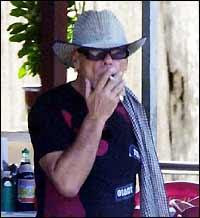Wartime cluster bombs still reap deadly harvest in Laos

Kinda makes ya feel proud to be American, huh? Just asking.
A man shapes a ball of C4 plastic explosive like a child with playdough, carefully inserts it into a hole at the side of the road, attaches an electric detonator, and walks away.
It's all in the name of saving lives.
He's not a soldier -- the war here in Laos ended more than 30 years ago -- but an explosives disposal expert trying to rid his country of the conflict's deadly legacy, which still kills and maims.
During the Vietnam war, neighbouring Laos, something of a sleepy Southeast Asian backwater, suddenly became the world's most heavily bombed country per head of population.
US bombers targeting Vietnamese and Lao communist forces flew about 80,000 missions over the country in the 1960s and 70s.
In fact, more explosives were dropped here than in Europe during World War II, over two million tonnes, according to UN data. And many failed to explode, leaving the poverty-stricken country littered with countless de-facto landmines.
Most of these devices -- some 260 million, experts suggest -- are cluster munitions, tennis ball-sized bomblets that were dropped in loads of 300 to 400 each to kill enemy troops over areas as large as several football fields.
Up to a third of these failed to explode, often because their impact was cushioned by tree foilage and muddy rice fields.
The US kills and then kills again.
Note: Headline links to source.
Labels: uncatagorized














0 Comments:
Post a Comment
<< Home